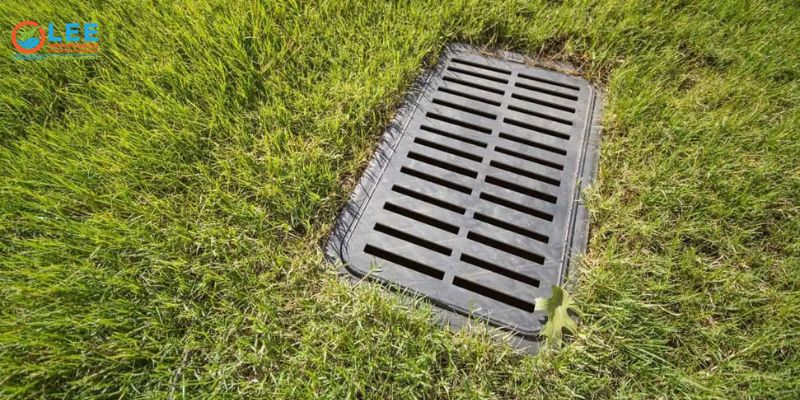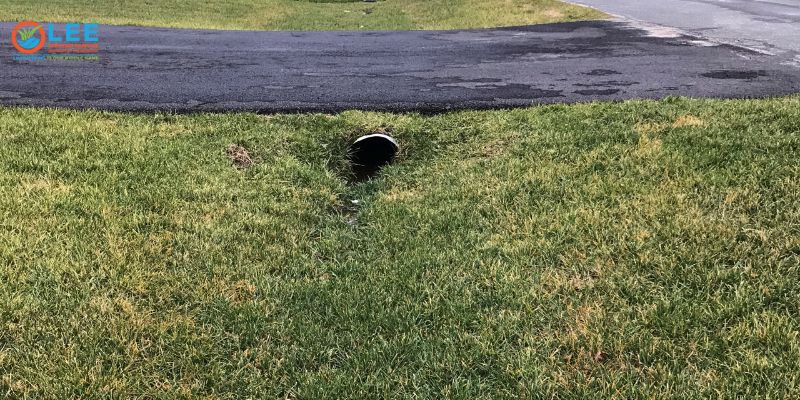In an era marked by unpredictable weather patterns and increasing instances of extreme precipitation, the need for effective flood management solutions has become more critical than ever. Floods pose a significant threat to communities, causing damage to infrastructure, disrupting lives, and leading to substantial economic losses. Among the various flood mitigation strategies, drainage swales have emerged as a sustainable and efficient solution to maximize safety and prevent flood damage.
Understanding Drainage Swales

Drainage swales, often called bioswales or vegetated swales, represent an innovative approach to stormwater management. Unlike conventional concrete channels, these swales are designed as shallow, vegetated depressions with the primary goal of effectively managing stormwater runoff. The key components of drainage swales include carefully selected vegetation, shape, and slope.
Vegetation plays a crucial role in stabilizing the soil and improving water quality. Native plants and grasses are strategically planted to absorb water, filter pollutants, and prevent erosion. The shape and slope of the swale are meticulously crafted to encourage the smooth flow of water, reducing the risk of surface runoff and erosion.
In essence, drainage swales are environmentally friendly and functional for flood prevention. By harnessing natural processes and vegetation, they provide an effective means of reducing the impact of stormwater on urban areas, promoting sustainability, and creating aesthetically pleasing green spaces. Incorporating drainage swales into urban planning signifies a shift towards resilient and ecologically sound stormwater management solutions.
Key Components of Drainage Swales
1. Vegetation
Drainage swales employ native plants and grasses strategically. These vegetation types serve a dual purpose: stabilizing soil and improving water quality. The intricate root systems act as natural filters, extracting pollutants from stormwater runoff. This vegetative cover not only aids in flood prevention but also enhances the ecological health of the surrounding environment.
2. Shape and Slope
A careful consideration of shape and slope characterizes the design of drainage swales. The swales are engineered with a gentle incline to facilitate the smooth flow of water. This design minimizes surface runoff, encourages water to infiltrate the soil, prevents erosion, and contributes to sustainable stormwater management.
3. Inlet and Outlet Structures
Essential to the functionality of drainage swales are the inlet and outlet structures. Inlets capture stormwater, preventing overwhelming runoff and directing it into the swale. These structures act as the first line of defense against flooding. Outlet structures, on the other hand, regulate the flow of water, ensuring it is released at a controlled rate into downstream areas. The strategic placement and design of these structures contribute significantly to the overall effectiveness of drainage swales in managing stormwater and preventing flood damage.
Benefits of Drainage Swales
1. Flood Prevention
Drainage swales play a pivotal role in flood prevention by efficiently managing stormwater runoff. Incorporating natural vegetation and the design of the swales allow for the effective slowing down and absorption of water.
This significantly reduces the volume of runoff reaching vulnerable areas, minimizing the risk of flooding. By harnessing natural processes, drainage swales provide an eco-friendly solution to one of the most pressing challenges communities face due to unpredictable weather patterns.
2. Erosion Control
Traditional concrete channels often contribute to soil erosion, but drainage swales are a natural barrier against this phenomenon. The vegetation within the swales stabilizes the soil, preventing erosion caused by stormwater runoff.
This dual functionality—flood prevention and erosion control—underscores the versatility and effectiveness of drainage swales in maintaining the integrity of landscapes. By safeguarding against erosion, these swales contribute to the overall sustainability of the environment and protect against the long-term consequences of soil degradation.
3. Water Quality Improvement
The vegetation within drainage swales is a powerful tool for improving water quality. As stormwater passes through the swale, the root systems of the plants act as natural filters, trapping sediments and pollutants. This process results in a significant reduction in the levels of contaminants reaching water bodies.
By enhancing water quality, drainage swales preserve aquatic ecosystems, protect biodiversity, and ensure the availability of clean water resources for human and environmental needs. Flood prevention and water quality improvement benefits make drainage swales an invaluable asset in sustainable stormwater management.
4. Aesthetic and recreational value
Unlike conventional stormwater management infrastructure, drainage swales offer an aesthetic upgrade to urban landscapes. Incorporating native plants and greenery transforms swales into visually appealing features, enhancing the overall beauty of the surroundings. Some communities have taken this further, converting drainage swales into recreational spaces by adding walking paths and benches.
This integration of functionality with aesthetics serves practical purposes and contributes to the well-being and enjoyment of residents, creating harmonious urban environments that balance ecological considerations with community needs.
5. Cost-Effective Solution
Drainage swales present a cost-effective alternative to traditional stormwater management infrastructure. Using natural processes and vegetation reduces the need for extensive concrete structures, lowering initial installation costs and long-term maintenance expenses.
The simplicity of the design and reliance on natural elements make drainage swales an economically viable option for communities seeking sustainable flood management solutions. By optimizing resources and minimizing ongoing maintenance requirements, drainage swales offer a financially prudent approach to enhancing the resilience of communities against the threats posed by flooding and stormwater runoff.
Implementing Drainage Swales Services
1. Site Assessment
- Before implementing drainage swales, a thorough site assessment is crucial. Factors such as topography, soil composition, and infrastructure must be considered.
2. Design and Engineering
- Professional engineers and landscape architects collaborate to design swales tailored to the site’s needs.
- Careful consideration is given to the capacity of the swale, the type of vegetation, and the overall layout.
3. Installation and Construction
- Skilled contractors carry out the installation of drainage swales, ensuring that the design specifications are met.
- Construction activities should be planned to minimize disruptions to the local community.
4. Maintenance and Monitoring
Regular maintenance is essential to ensure the continued effectiveness of drainage swales.
Monitoring vegetation health, clearing debris, and addressing any signs of erosion are part of ongoing maintenance efforts.
Conclusion
As climate change intensifies the frequency and severity of extreme weather events, the importance of sustainable flood management solutions cannot be overstated. Drainage swales offer a versatile and eco-friendly approach to preventing flood damage while providing additional benefits such as improved water quality and enhanced urban aesthetics. By incorporating drainage swales into urban planning and infrastructure projects, communities can maximize safety, reduce the risk of flooding, and create resilient, environmentally friendly spaces for future generations.


